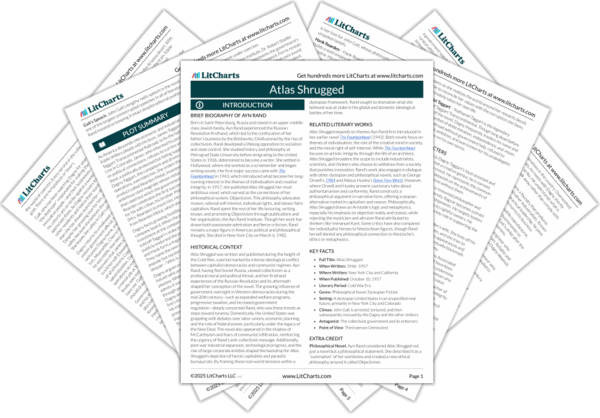Next
Summary
Atlas Shrugged Study Guide |
Next
Summary
|
Welcome to the LitCharts study guide on Ayn Rand's Atlas Shrugged. Created by the original team behind SparkNotes, LitCharts are the world's best literature guides.

Philosophical Novel. Ayn Rand considered Atlas Shrugged not just a novel but a philosophical statement. She described it as a “summation” of her worldview and created a new ethical philosophy around it called Objectivism.
Galt’s Speech. John Galt’s lengthy radio speech in the novel is one of the longest uninterrupted speeches in all of literature. Rand insisted on keeping it intact despite editorial pushback.